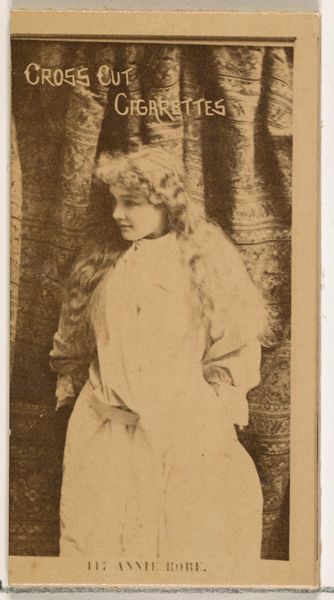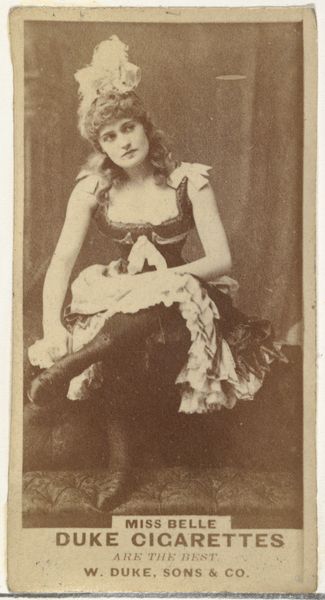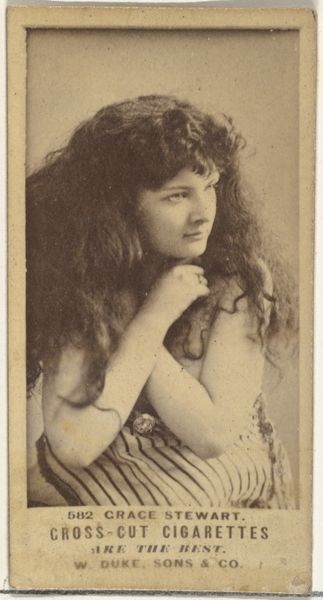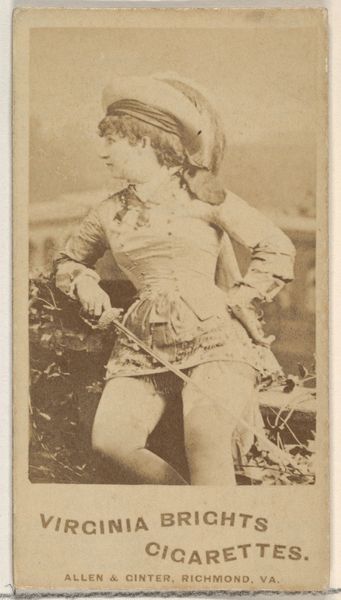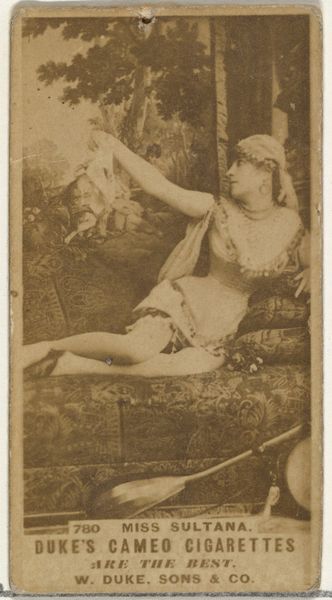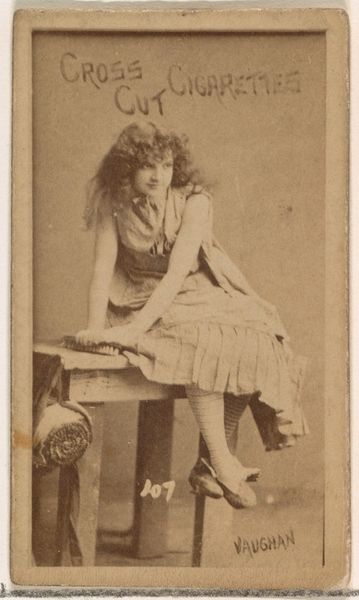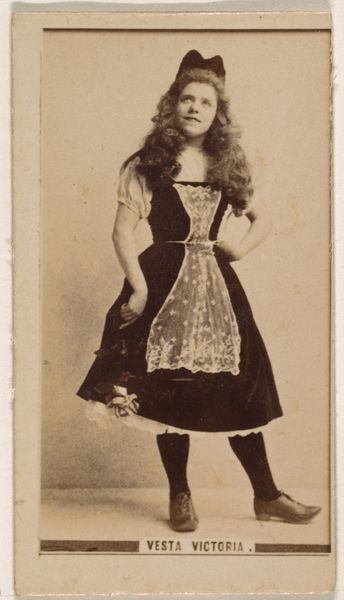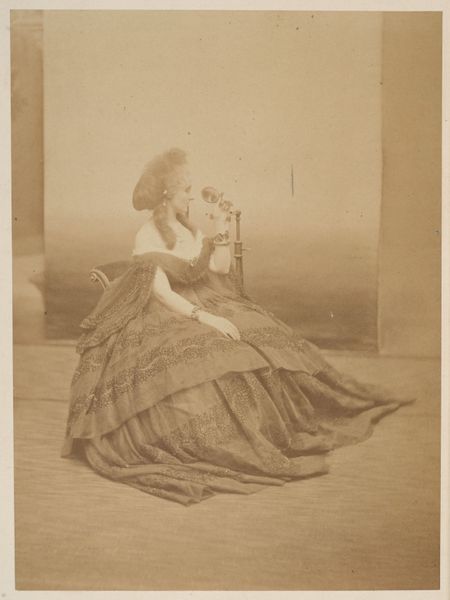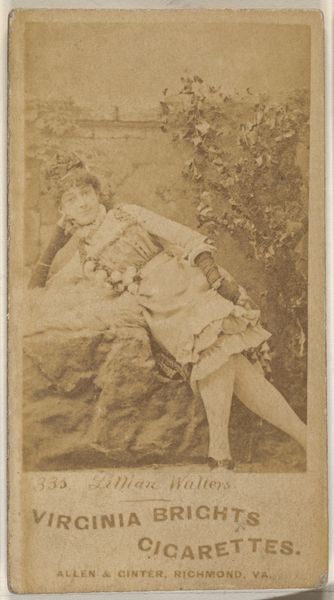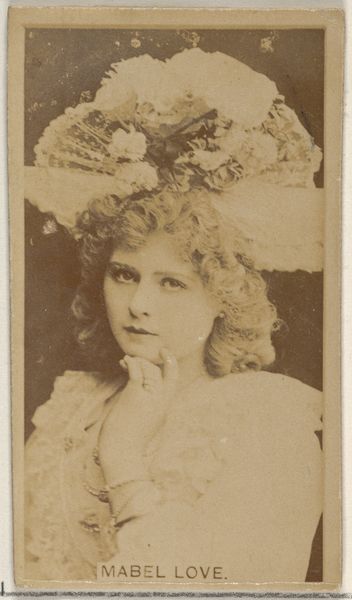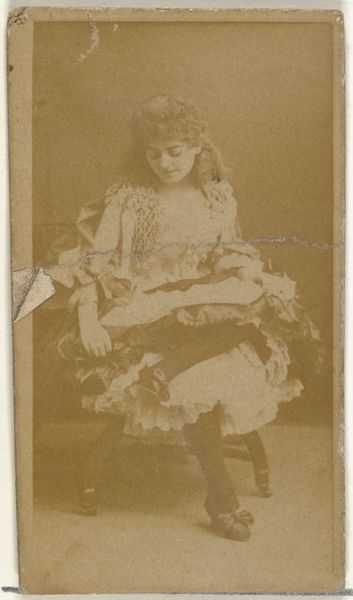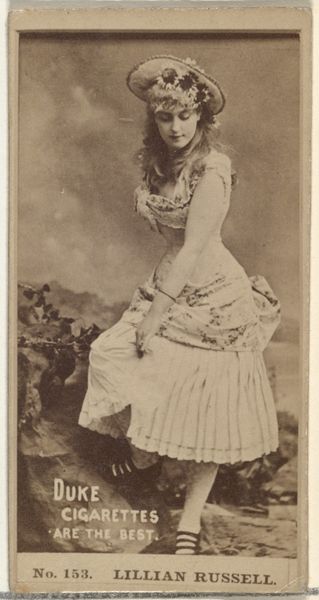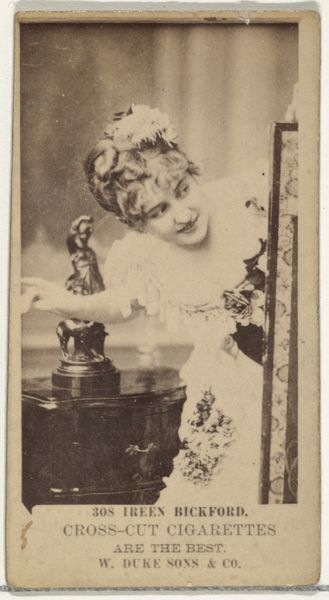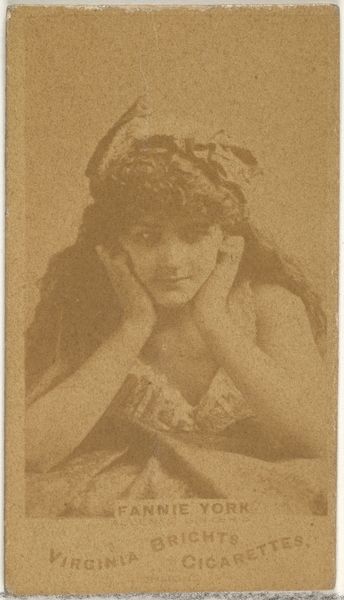
Ellaline Terriss, from the Actors and Actresses series (N45, Type 8) for Virginia Brights Cigarettes 1885 - 1891
0:00
0:00
drawing, print, photography, gelatin-silver-print
#
portrait
#
drawing
#
self-portrait
# print
#
charcoal drawing
#
figuration
#
photography
#
aesthetic-movement
#
gelatin-silver-print
Dimensions: Sheet: 2 5/8 x 1 1/2 in. (6.6 x 3.8 cm)
Copyright: Public Domain
Editor: So, this is a portrait of Ellaline Terriss, an actress, part of a series made between 1885 and 1891 by Allen & Ginter for Virginia Brights Cigarettes. It's a gelatin silver print, and it feels very much of its time, capturing a posed elegance. What stands out to you about this piece? Curator: For me, its power lies in its connection to consumption and labor. It's not just a portrait; it’s an advertisement, a product itself, literally included in cigarette packs. Consider the materiality – a photograph, reproduced en masse, meant to be briefly enjoyed then discarded with the packaging. How does that transient existence affect our understanding of it as "art"? Editor: That's interesting. I hadn't really thought about its original purpose so much. So, you are saying that we can learn more about society by looking into the industrial purpose and method of making of the artwork? Curator: Precisely. The image isn't isolated; it’s enmeshed in a network of production, distribution, and ultimately, waste. Who was Ellaline Terriss to the consumers of these cigarettes? What did she represent? Her image was another consumable along with tobacco. It blurs the lines between art, commodity, and the constructed image of celebrity. How does understanding the means of its production alter your perception? Editor: It makes me think about how fleeting fame can be, and the amount of labor needed to mass-produce images like this one. Knowing it was made for cigarettes changes everything, it feels…less precious, and more accessible. Curator: Exactly. By considering these photographs in the context of industrial capitalism and mass media we can expand the discourse about art’s relationship to broader social and economic structures. Editor: This makes me appreciate the portrait more, recognizing the industrial aspect and all the things it touches from that era! Thank you! Curator: My pleasure! Considering art as deeply rooted in the conditions of its making and consumption allows us to see it not as an isolated creation, but as an integral component of our historical reality.
Comments
No comments
Be the first to comment and join the conversation on the ultimate creative platform.
